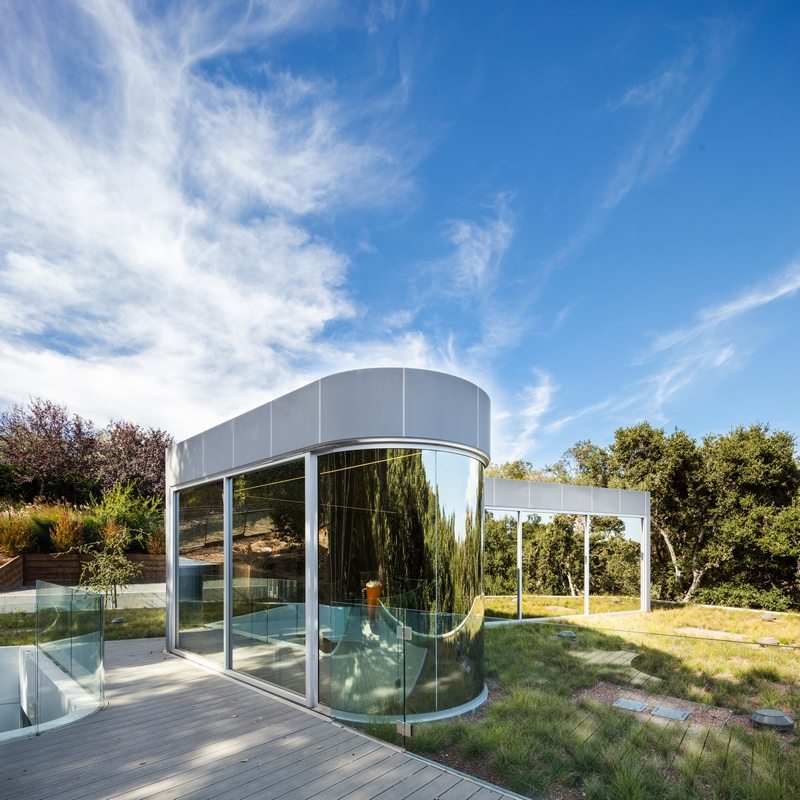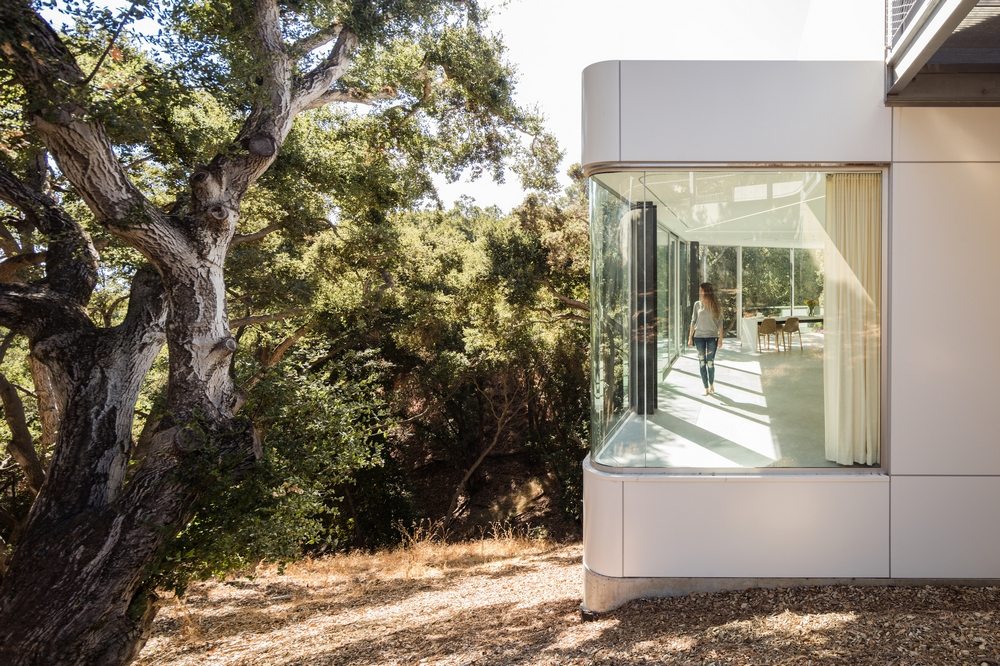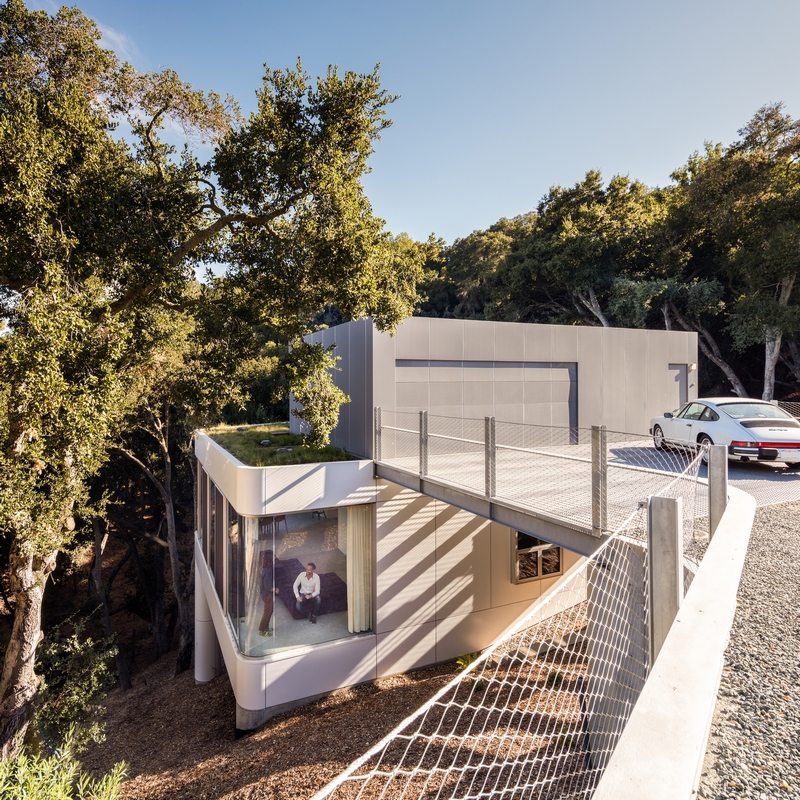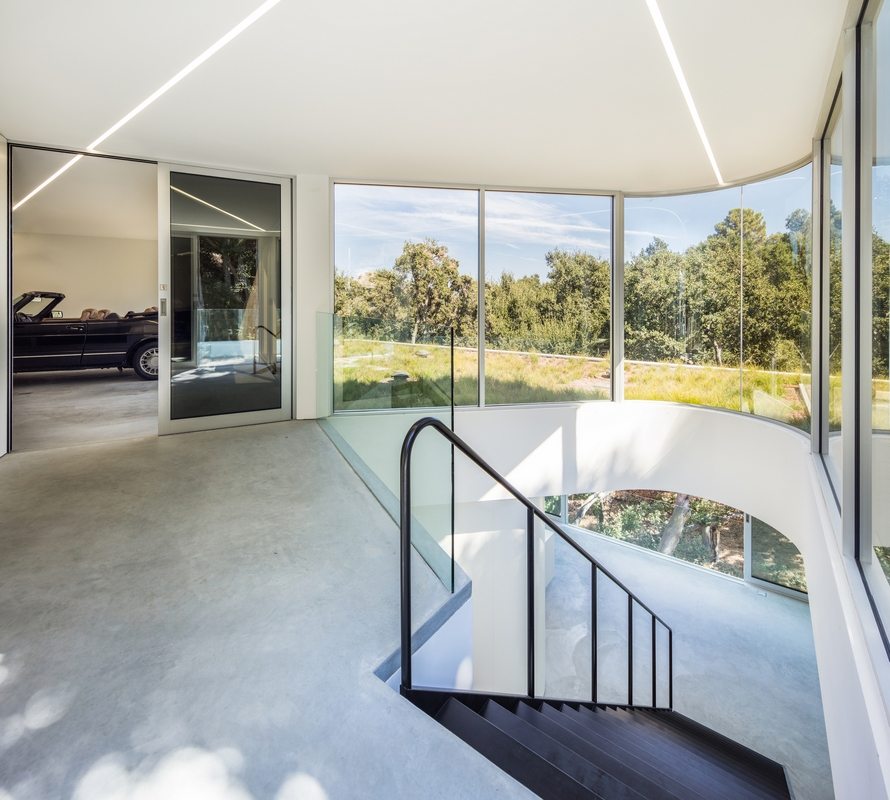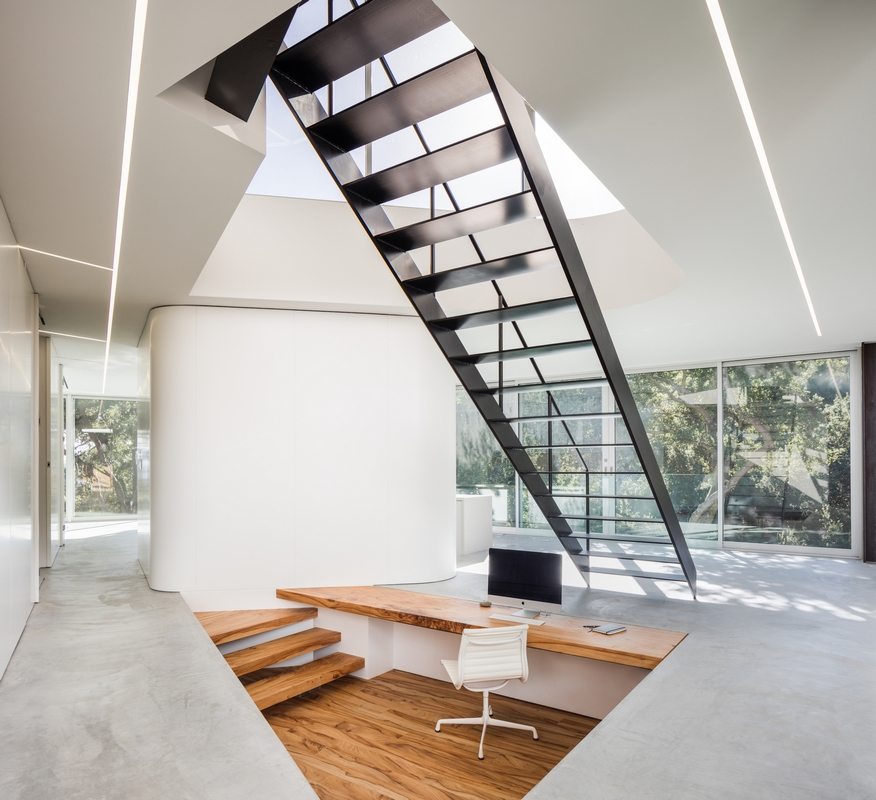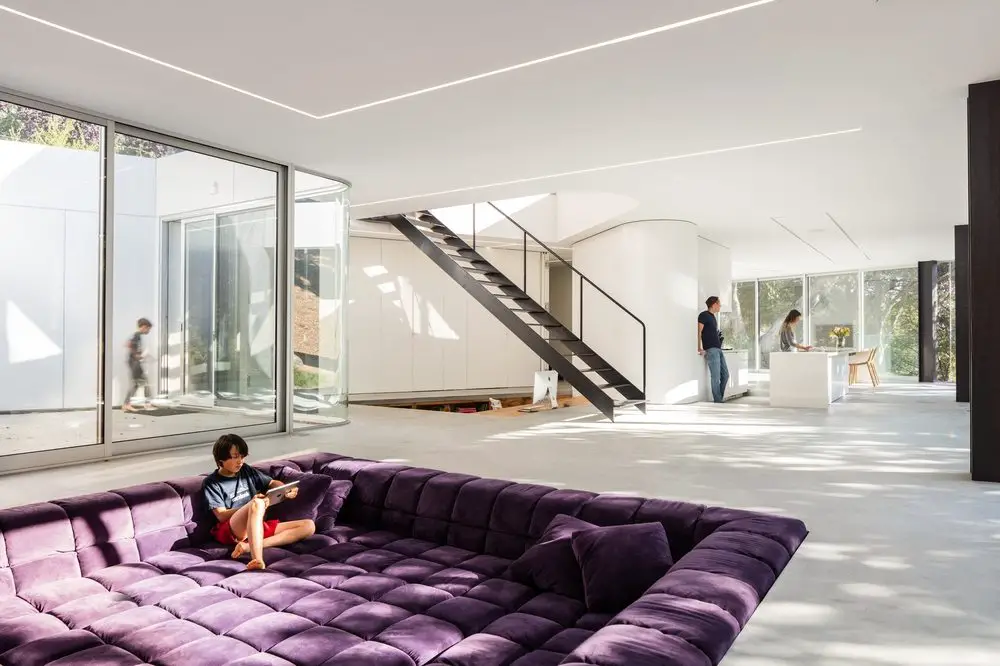Post Contents
Cupertino, United States – Craig Steely Architecture
Project Year : 2016
Developed Area : 612.6 m2
Photographs : Darren Bradley
Pam & Paul’s House is a floating glass box – very contemporary and unique. It is an oasis in the middle of the forest, surrounded by large oak trees. Standing on a sloping site, the house is supported by two trunk-line columns.
The glass and white structure provides a stark contrast against the rough terrain. However, despite the physical difference, it works with the environment instead of against it.

The façade features all-glass without the need for curtains and such. The thick foliage and dense trees provide the residents much-needed privacy. A garden is located at the rooftop area, with native grasses and all. An observation deck offer great views of the wild habitat.
Inside, it is a vast, open-plan space. The house is grand, bright, and airy with a unique contemporary feel.

Pam & Paul’s House has taken full advantage of the surrounding landscape. Each part of the house offers unrestricted views. It gives a sense of being outdoors while being safely in.
Notes from the Architect:
The house floats in the canopy of a dense Oak grove in the foothills of the Santa Cruz Mountains just west of Silicon Valley.
The conceptual idea came clearly and quickly—float a glass box in the leaves of the trees on two trunk-like columns, disrupting as few oaks as possible. The dense tree canopy offers the opportunity to build a completely glass walled house, protected from the direct rays of the sun, yet filled with dappled sunlight. The steepness of the site directs the entry to the living level from above through a grass-covered roof, like an open meadow sitting in the tops of the trees.
A bridge of steel grating connects grade and the rooftop of native grasses. An observation deck sits in the grass field along with a garage/foyer of zinc panels and mirror glass. Sunlight funnels down through the foyer into the living level.
The main living area is cantilevered into the tree canopy while bedrooms, bathrooms, service and storage are located behind a long wall of cabinetry along the hillside. Distinct spaces (the living room, the office, and the kitchen) are delineated spatially in the open plan by sinking them into the concrete floor. These spaces are further delineated by material. In the sunken office, all surfaces—flooring, desk, cabinetry— are milled from a single slab of Chinese pistachio. The sunken living room is filled with 144 sq. ft. of B&B Italia’s “Tufty time” sofa components. In the kitchen/dining room a 22 ft. long counter of white composite quartz continues the kitchen work surface into the dining table. In the ceiling, flush mounted LED strips imply these zones. Strong geometric lines of light, reminiscent of a Dan Flavin sculpture, are clearly visible from the outside looking up through the leaves.
The house sits at the boundary between suburb and wilderness and straddles the two like it sits on the site. Just as they did before construction, Mule deer rest in the shade of the cantilever which is now a continuation of the oak canopy. Gray squirrels run along the branches and wild turkeys roost in the treetops, merely 10 ft. away from the kitchen table. The expanse of glass feels permeable and disappears only to leave nature as it always has been in the grove.
Click on any image to start lightbox display. Use your Esc key to close the lightbox. You can also view the images as a slideshow if you prefer. 😎
Exterior View :
Interior View :
Drawing View :
If you liked this house, then you’ll also like Jodlowa House…



